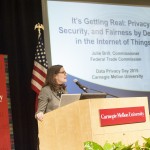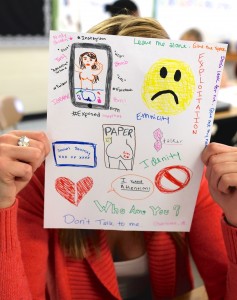We have had so much fun looking at all of the privacy images that people have contributed to our collection, so we decided to analyze them and write a
research paper. PhD student Maggie Oates presented our paper at the
Privacy Enhancing Technologies Symposium this week, where it won the Andreas Pfitzmann Best Student …
Continue Reading ››


We just added new images to our collection contributed by participants in
CMU's Privacy Day events on January 28.
Also
check out the videos of our keynote speaker and panel. …
Continue Reading ››
We began the Privacy Illustrated project in December 2014 when we visited three Pittsburgh-area schools, passed out lots of markers, and asked the kids to draw pictures of privacy. The results are fascinating and the kids are adorable. Check out some (privacy protected) photos of our school visits and then
explore our … Continue Reading ››
{{unknown}}
{{unknown}}

The
Deep Lab book is out, featuring our Privacy Illustrated chapter in all its full color glory on pages 186-227. The chapter features some of our favorite privacy drawings from kids and adults, along with interesting …
Continue Reading ››
By Lorrie Faith Cranor, Rebecca Balebako, Darya Kurilova, & Manya Sleeper
This post is part of a chapter that will appear in the Deep Lab book... coming soon! You can also watch Lorrie Cranor's Deep Lab seminar presentation on this project.
What is privacy? What does privacy mean to you?
Privacy is a complex concept that …
Continue Reading ››
What does privacy mean to you?












 The
The